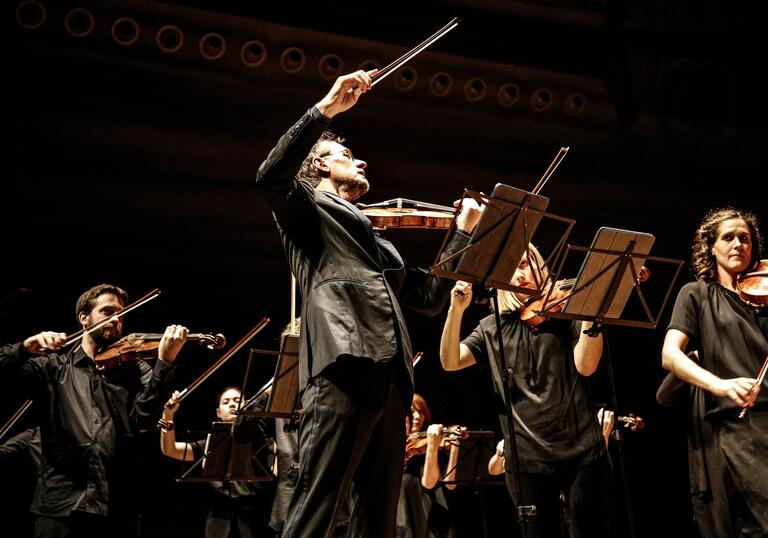
Programme and performers
Witold Lutosławski Musique funèbre: Prologue
Bryce Dessner Réponse Lutosławski
1. Resonance
2. Preludio
3. Des Traces
4. Warsaw Canon
5. Residue
Wojciech Kilar Orawa
Krzysztof Penderecki Three Pieces in Baroque Style: Aria
String Quartet No 1
Jonny Greenwood There Will Be Blood: Suite
1. Open Spaces
2. Future Markets
3. HW/Hope of New Fields
4. Proven Lands
5. Prospector’s Quartet
Karol Szymanowski (arr Richard Tognetti) String Quartet No 2
1. Moderato, dolce e tranquillo
2. Vivace, scherzando
3. Lento
Australian Chamber Orchestra
Richard Tognetti director & violin
Guildhall School musicians
Artist biographies
The Australian Chamber Orchestra lives and breathes music, recognised around the world for its powerful performances and brave interpretations. Steeped in history but simultaneously looking to the future, its programmes embrace celebrated classics alongside new commissions, as well as adventurous cross-artform collaborations.
It has been led by Artistic Director Richard Tognetti since 1990, and gives more than 100 concerts each year. Whether performing in Manhattan, New York, or Wollongong, NSW, the ACO is unwavering in its commitment to creating transformative musical experiences.
The orchestra regularly collaborates with artists and musicians who share its ideology: from Emmanuel Pahud, Steven Isserlis, Dawn Upshaw, Olli Mustonen, Brett Dean and Ivry Gitlis to Neil Finn, Jonny Greenwood, Barry Humphries and Meow Meow; to visual artists and film makers such as Bill Henson, Shaun Tan, Jon Frank and Jennifer Peedom, who have co-created unique, hybrid productions for which the ACO has become renowned.
Testament to its international reputation is the three-year residency (beginning in the 2018–19 season) here at the Barbican as International Associate Ensemble at Milton Court. This residency followed on from the success of ACO Artistic Director Richard Tognetti’s time as the Barbican’s first ever Artist-in-Residence at Milton Court Concert Hall.
In addition to its national and international touring schedule, the orchestra has an active recording programme across CD, vinyl and digital formats. Its recordings of Bach’s violin works won three consecutive ARIA Awards. Recent releases include Water | Night Music, the first Australian-produced classical vinyl for two decades, Indies & Idols, and the soundtrack to the cinematic collaboration, River.
In 2020 the ACO launched its inaugural digital subscription ‘ACO StudioCasts’, a critically acclaimed award-winning season of cinematic and immersive concert films.
aco.com.au
